How to Cut an Airline Chicken Breast
A chicken breast with the first joint of the wing still attached boosts your presentation while also delivering juicier meat.
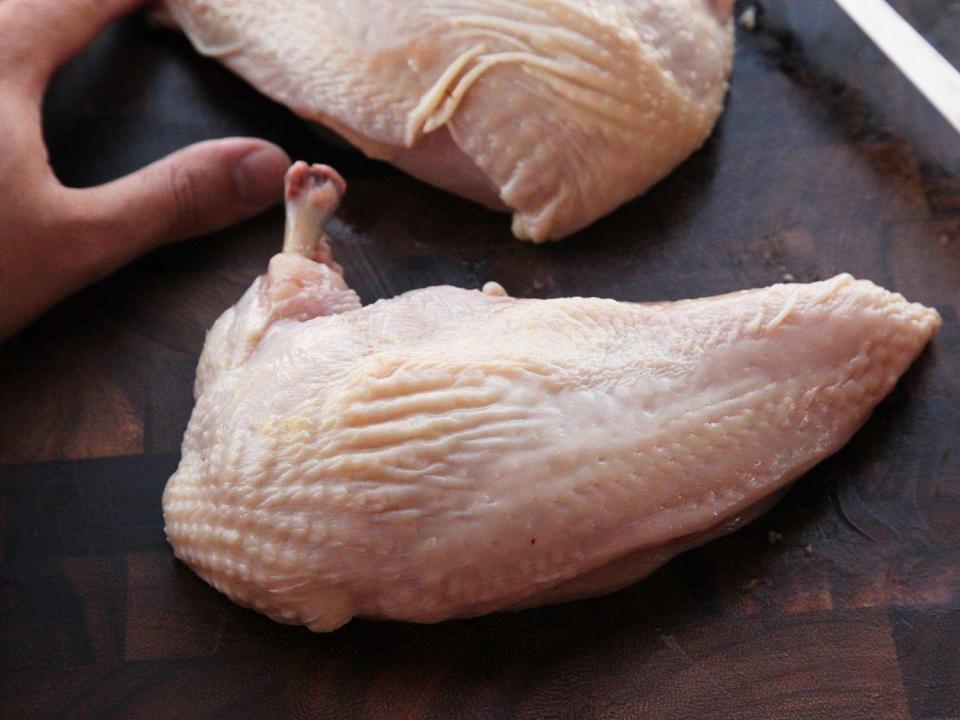
Serious Eats
An airline chicken breast, also known as a Statler chicken breast or a chicken suprême, is a chicken breast with the first joint of the wing still attached. If I'm serving a whole chicken breast, I prefer airline breasts over regular boneless breasts, both for the presentation factor (that bone sticking out just looks so cool), and for the juicier meat it produces. Bones don't actually add flavor to meat, but they can moderate heat flow within the cooking breast, ensuring that the fattest part of the breast cooks more gently and evenly.
An airline chicken breast should work in any basic pan-seared chicken breast recipe. You just need to add a little bit of extra time to account for the extra mass when cooking it.
While most butchers should be able to prepare airline breasts for you, it's much more satisfying (not to mention cost-effective) to do it yourself. Start with a whole chicken and you'll end up with a couple of extra wings, a whole carcass, and two legs to use for future meals and stocks.
Here's how you do it.
Step 1: Prep Your Station
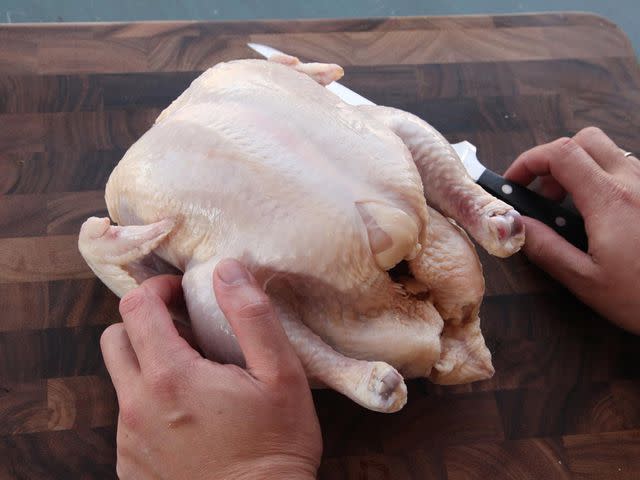
Serious Eats
Start with a whole chicken, a sharp boning knife or chef's knife, and a large, clean cutting board. That chicken's gonna need some space to move.
Step 2: Stretch the Wing
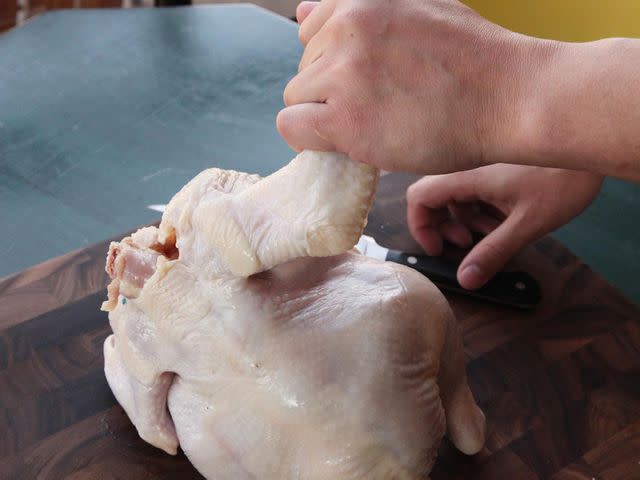
Serious Eats
The first step in the process is to remove a portion of wings, leaving just the first joint and the meaty part of the drumette attached. Start by stretching out the wing to expose the skin around the drumette.
Step 3: Slice to the Bone
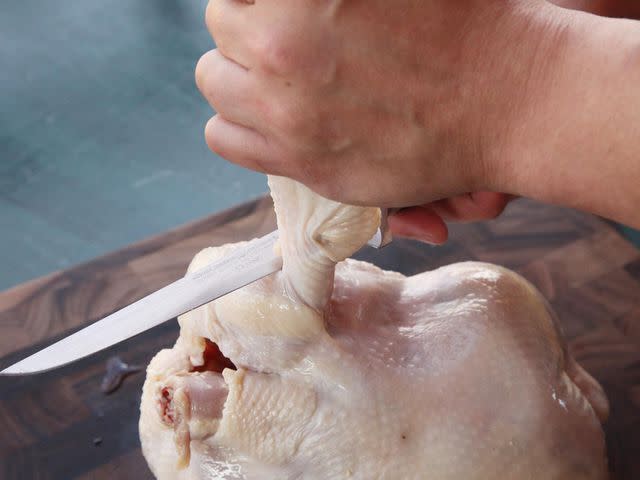
Serious Eats
Place the bottom of your boning knife near the center of the drumette and slice until it hits the bone. The goal here is to completely cut the meat, skin, and tendons surrounding that bone.
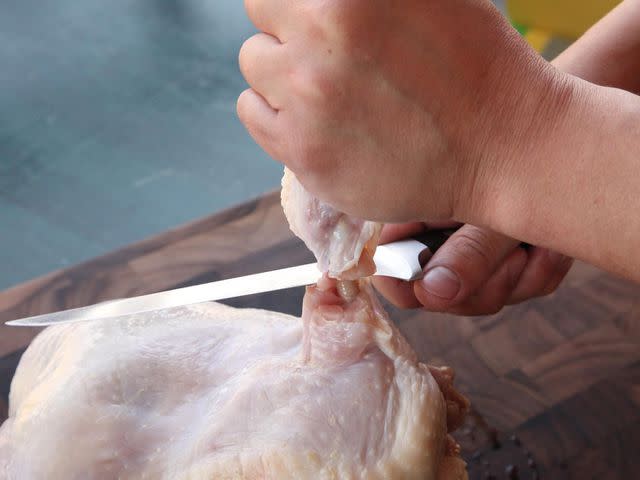
Serious Eats
The trick is to keep your knife in the same position and rotate the bird around in a circle. This is much easier than trying to shimmy your knife around in an awkward rotation.
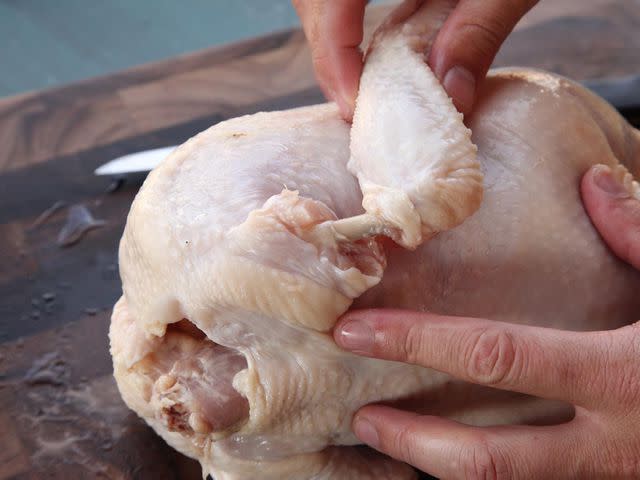
Serious Eats
Rotate the chicken by twisting it with the wing in your grip until you've completely cut through to the bone.
Step 4: Remove the Wing
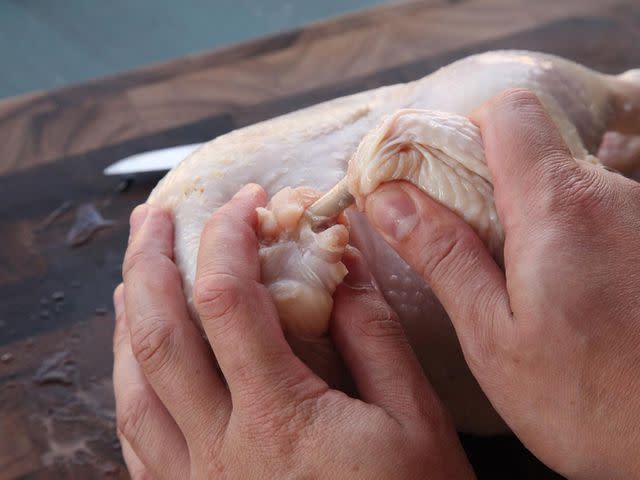
Serious Eats
Grab the wing tip flat in your hand and bend it backwards firmly.
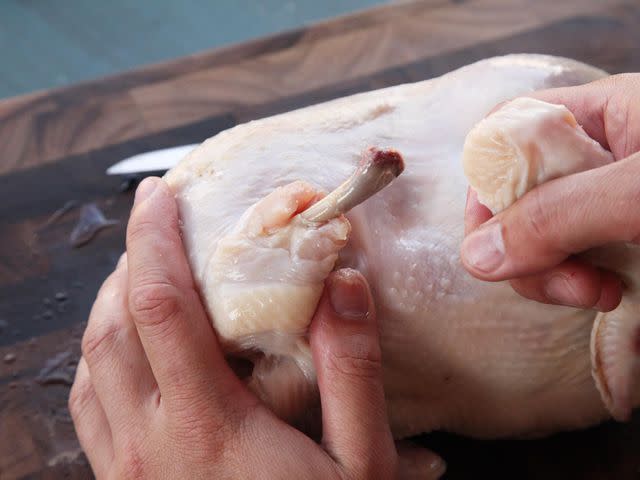
Serious Eats
It should pop right off, exposing a clean bone. Here's a quick animated GIF of the process:
Easy, right?
Step 5: Separate the Breast From the Breast Bone
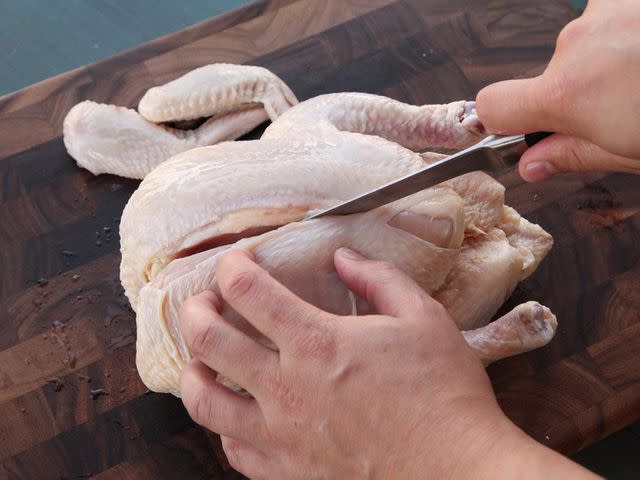
Serious Eats
Once both wing portions have been removed, turn the chicken onto its back and insert your boning knife into the breast on one side of the breast bone, trying to stay as close to the bone as possible.
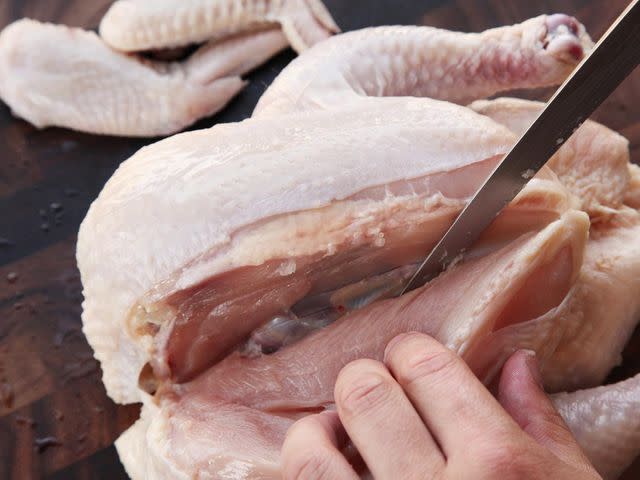
Serious Eats
Pull back on the chicken breast as you work your knife in until the sternum is exposed. As you continue removing the breast, you should use just the very tip of your knife with short, shallow strokes, letting your hand and gravity do most of the work of removing the breast.
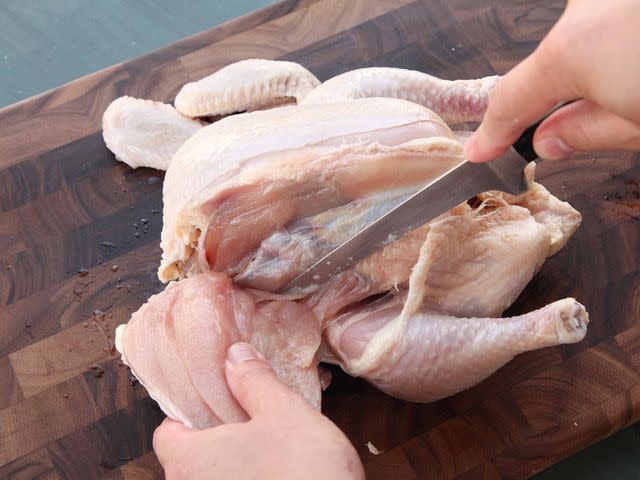
Serious Eats
Keep the knife tip hugging the bones as closely as possible until the breast is fully released (you'll have to cut through the skin that connects it to the legs).
Step 6: Work Through the Joint
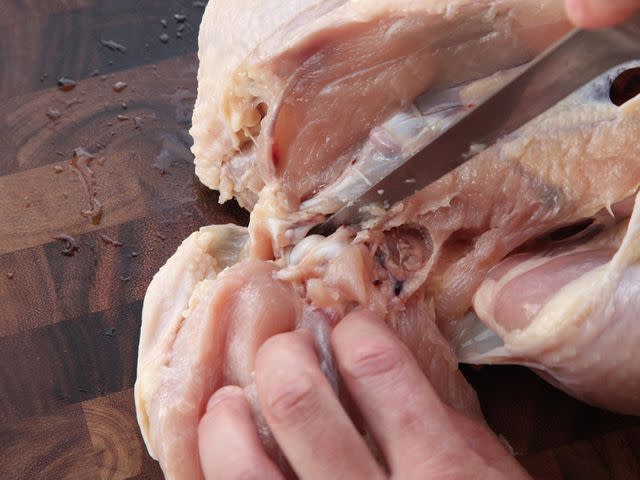
Serious Eats
Once you've removed the meat from the breast bone, your last goal is to separate the wing bone from the carcass. To do this, twist the wing around until you can locate the joint, then use the tip of your knife to cut through any tough tendons and other connective tissue holding it in place.
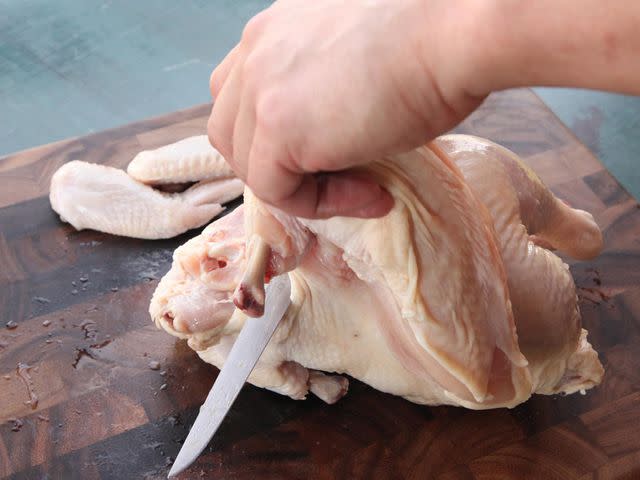
Serious Eats
Lift the breast and the wing joint in one piece and slide your knife through, separating the entire cut from the rest of the chicken.
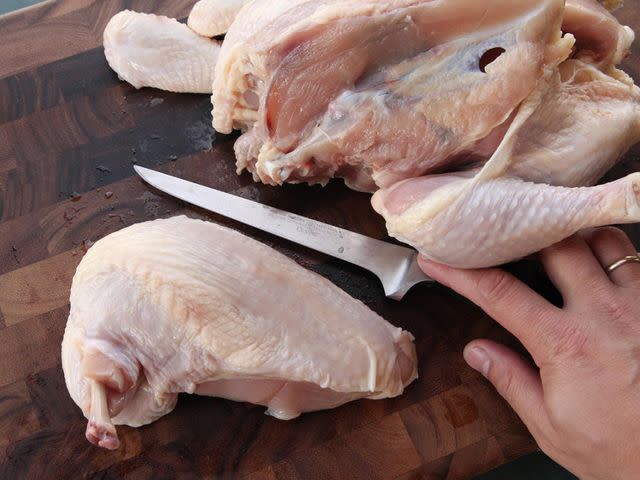
Serious Eats
Ready to Cook
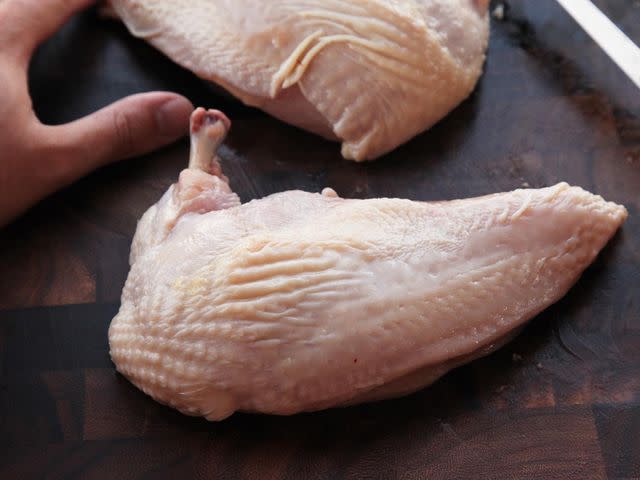
If you'd like, you can now remove the tenderloin (the small piece of meat underneath the breast) by pulling it away with your hands. I prefer to leave it attached to give a slightly larger full breast for serving. Your airline chicken breast is now ready to cook. Now is a good time to warn your guests about how awesome dinner is going to be.

